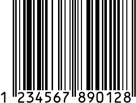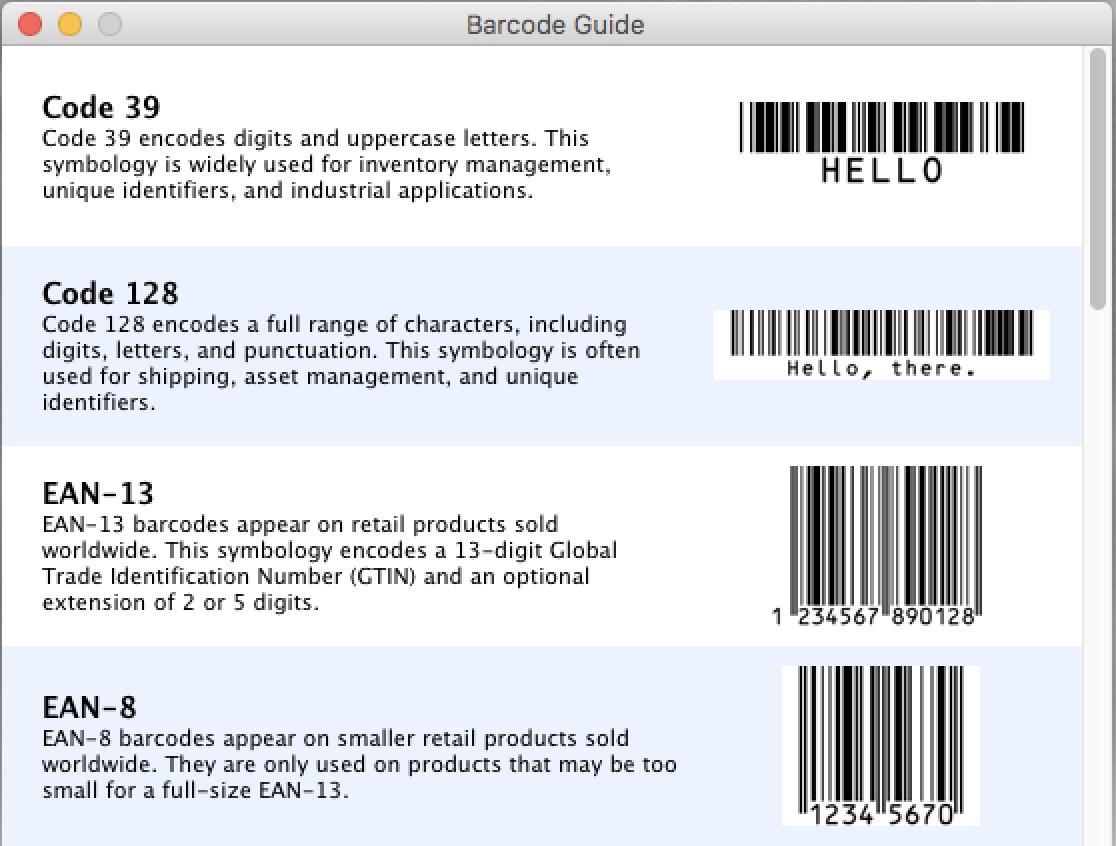What's a barcode?
Barcodes encode information into a sequence of lines of varying widths that can be read by a barcode scanner. The value stored in a barcode is typically a number, though some types of barcodes can store letters, symbols, and other characters. The value of a barcode is typically shown underneath the bars.

There are many types of barcodes for different applications. Each type of barcode is called a symbology. A symbology defines what values can be stored in the barcode, how to convert those values into a barcode, and what range of sizes the barcode may printed at.
Many symbologies were designed for a specific purpose and have been adopted as a standard by an industry. Almost all books sold at retail have an ISBN barcode that stores the book's unique International Standard Book Number. Virtually all other products sold at retail have an EAN-13 or UPC-A barcode, depending on the country the product is being sold in. In these cases, the retail industry has specified that these symbologies are to be used in a standardized way on retail products.

Which symbology should be used depends on what information is being stored in the barcode. Easy Barcode Creator has a barcode guide available under it's Tools Menu.

It presents all of the barcode types (symbologies) that can be made with Easy Barcode Creator as well as a description for their common uses.